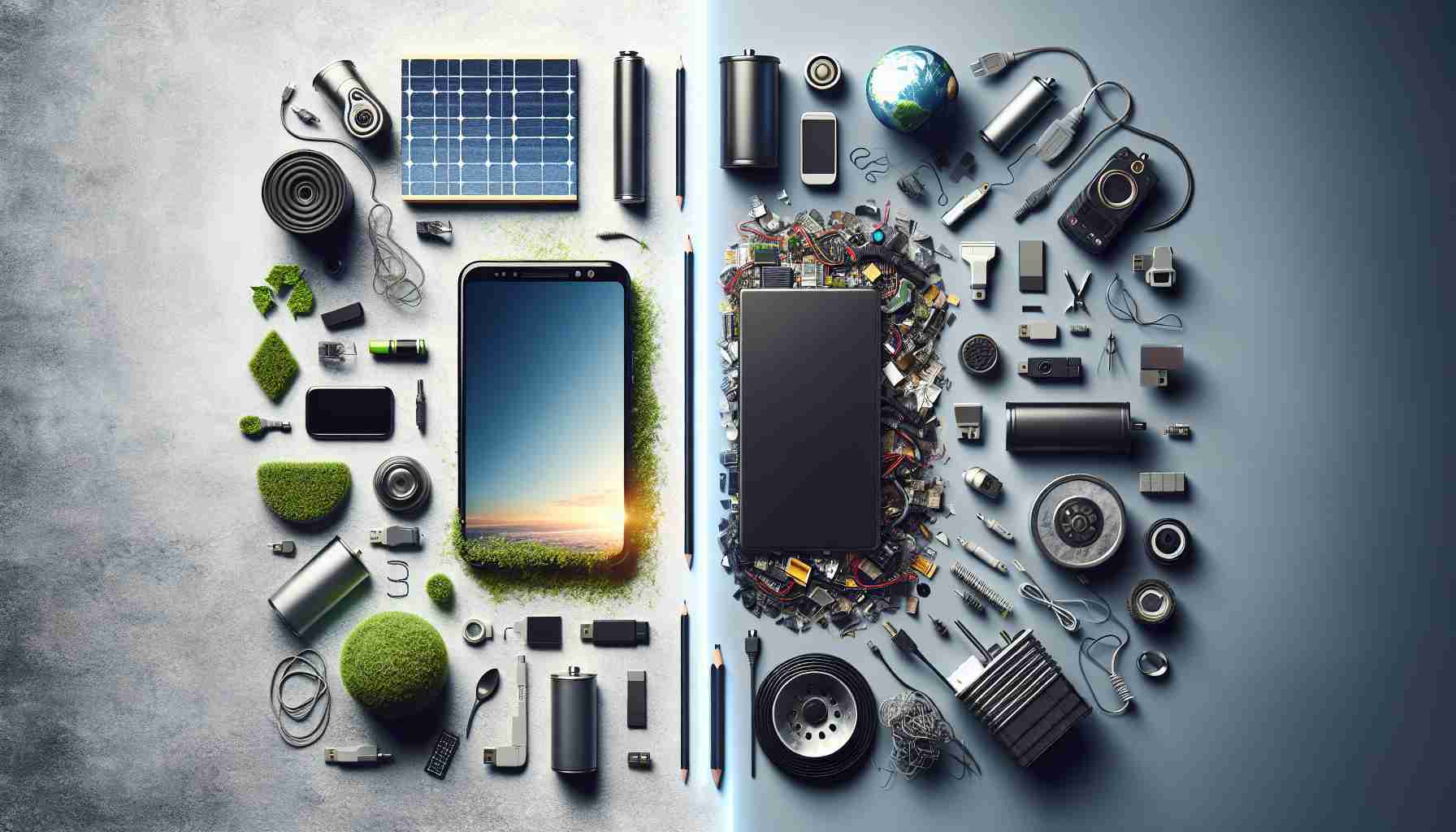The tech giant Apple is moving distinctly on the sustainable front, pledging extensive ecological advancements. With a promise to eliminate all plastic from packaging by next year, the company sets a new standard in environmental consciousness. Furthermore, they aim for their entire product line to achieve carbon neutrality within six years. This significant endeavor includes recycling initiatives to repurpose materials from older devices.
Yet, as Apple rolls out devices designed to minimize ecological footprints, a dilemma surfaces: while manufacturing durable goods is crucial, it might also be essential to encourage longer lifespans for electronic devices. Balancing between innovation and sustainability becomes a tightrope walk for tech companies.
Meanwhile, a UN report spotlights a troubling trend: electronic waste is skyrocketing. Tragically, abandonment of gadgets exceeds the rate of recycling by fivefold. Many individuals confess to lacking a systematic approach to dealing with obsolete technology, which results in a worrying accumulation of dormant tech in our homes.
The push for sustainable electronics resonates with the public conscience. According to a survey, millennials and Generation Z showcase a readiness to invest in eco-friendlier gadgets. Apple has responded to these consumer sentiments by launching products like the carbon-neutral Apple Watch, partnering environmentally responsible materials with their high-tech offerings.
However, the quest for sustainability in tech accessories comes with its trade-offs. For instance, while opting for accessories composed of recycled materials is commendable, the functionality and aesthetic appeal sometimes fall short of expectations. There’s ongoing hope that future products will combine sustainability with the premium quality consumers desire.
Companies are emerging with innovative solutions, such as compostable cases made from bioplastics and plant materials, which impress both in looks and feel. Furthermore, these products often come with programs for recycling old accessories, reinforcing the cycle of sustainability. Despite challenges, the drive for eco-friendlier tech demonstrates an evolving industry conscientious of its environmental impact, striving to offer consumers responsible choices.
In response to the article on Apple’s environmental commitment, there are several important questions and additional facts relevant to the topic:
What is Apple doing to reduce its carbon footprint in its operations?
Apple is investing in renewable energy for its operations with the goal of powering all of its facilities globally with 100% renewable energy. The company also supports the construction and operation of renewable energy projects, such as solar arrays and wind farms.
How does Apple’s trade-in program contribute to reducing e-waste?
Apple has a trade-in program that encourages customers to return their old devices. These devices are either refurbished for resale or recycled responsibly. This not only extends the life of Apple products but also ensures the proper recycling of e-waste.
What are the controversies associated with Apple’s approach to sustainability?
Critics argue that while Apple is making strides in improving its environmental footprint, it also encourages a culture of quick obsolescence through frequent product releases. Some environmental advocates highlight the importance of designing products that are easier to repair, thus extending their lifespan, which is not always the case with Apple products.
What are the advantages of Apple’s environmental initiatives?
Their efforts promote environmental responsibility, encourage innovation in sustainable product design, and set benchmarks for other companies. These initiatives can lead to advancements in technology that may benefit the entire industry and reduce the environmental impact of electronic products.
What are the disadvantages?
The main disadvantage is that, while sustainability is integrated into Apple’s products, this could lead to higher costs for consumers. Additionally, the high standards for sustainability and recycling could be challenging for Apple to maintain as demand for their products continues to grow.
Key challenges related to the topic include:
– Balancing innovation with sustainability: Tech companies like Apple need to innovate without contributing to rapid obsolescence and increased e-waste.
– Addressing consumer expectations: Consumers expect high-quality, durable products that are also sustainable.
– Managing the cost of sustainability: Incorporating sustainable materials and processes may increase production costs, which can be passed on to consumers.
As for related links, one could visit Apple’s main website to learn more about their environmental policies and initiatives:
Apple
Another relevant link for further reading on sustainability and technology might be the United Nations Environment Programme (UNEP) which releases reports and data on e-waste and sustainability efforts:
United Nations Environment Programme
The source of the article is from the blog enp.gr
